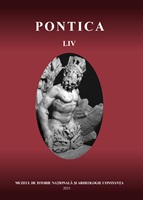A Recent Contribution to the Absolute Chronology on the Early Bronze Age in Eastern Romania
A Recent Contribution to the Absolute Chronology on the Early Bronze Age in Eastern Romania
Author(s): Vasile Diaconu, Oana Gâză, Doru PăceșilăSubject(s): Archaeology, Regional Geography, Historical Geography, Prehistory
Published by: Muzeul de Istorie Națională și Arheologie Constanța
Keywords: Bronze Age; absolute chronology; fortification; Vânători-Neamț; Estern Romania;
Summary/Abstract: The topic of Early Bronze Age in the areas within Eastern Romania is still an open matter concerning the ethnic composition and the temporal limits, in particular. Recent research in a fortified site in the territory of the Vânători-Neamț locality provides the possibility of completing the existing chronological picture for the first stage of the Bronze Age. Although a very small excavation enabled the investigation of the archaeological site, two bone samples were obtained for absolute dating. The analyses were performed at “Horia Hulubei” National Institute for Physics and Nuclear Engineering. We present here several methodological landmarks. Out of the two datings, only one is viable; namely, it fits the specifics of archaeological material. Thus, the dating obtained for the site of Vânători-Neamț indicates that, at the crossroads between the 3rd and the 4th millennium BC, a community of the Târpești cultural group already inhabited this fortified settlement. Though there is no unanimous consensus on the beginning of Early Bronze Age east from the Carpathians, there is no doubt that after the end of the Cucuteni culture, a series of alterations take place. They suggest a much different picture than the Eneolithic one. The most recent contributions indicate that in the area between the Carpathians and the Prut, in the early stages of Bronze Age, several cultural entities existed – some better individualised, other more diffuse, carrying local Eneolithic inheritances or dominated by allogenous elements from the East and the Nort . The localisation of certain archaeological remains corresponding to these cultural manifestations at a well-structured chronological level was possible mainly through the absolute temporal landmarks obtained. Whereas they are scarce, they may represent the basis of historical analysis. Hence, a series of 14C data were obtained for several funerary complexes , but similar information is available for settlements, too3 . To complete the current state-of-the-art regarding the chronology of the Early Bronze Age, we will discuss an absolute dating, recently obtained for a fortification from the sub-Carpathian area of Moldavia, within the Neamț County.
Journal: Pontica
- Issue Year: 2021
- Issue No: 54
- Page Range: 181-191
- Page Count: 11
- Language: Romanian

